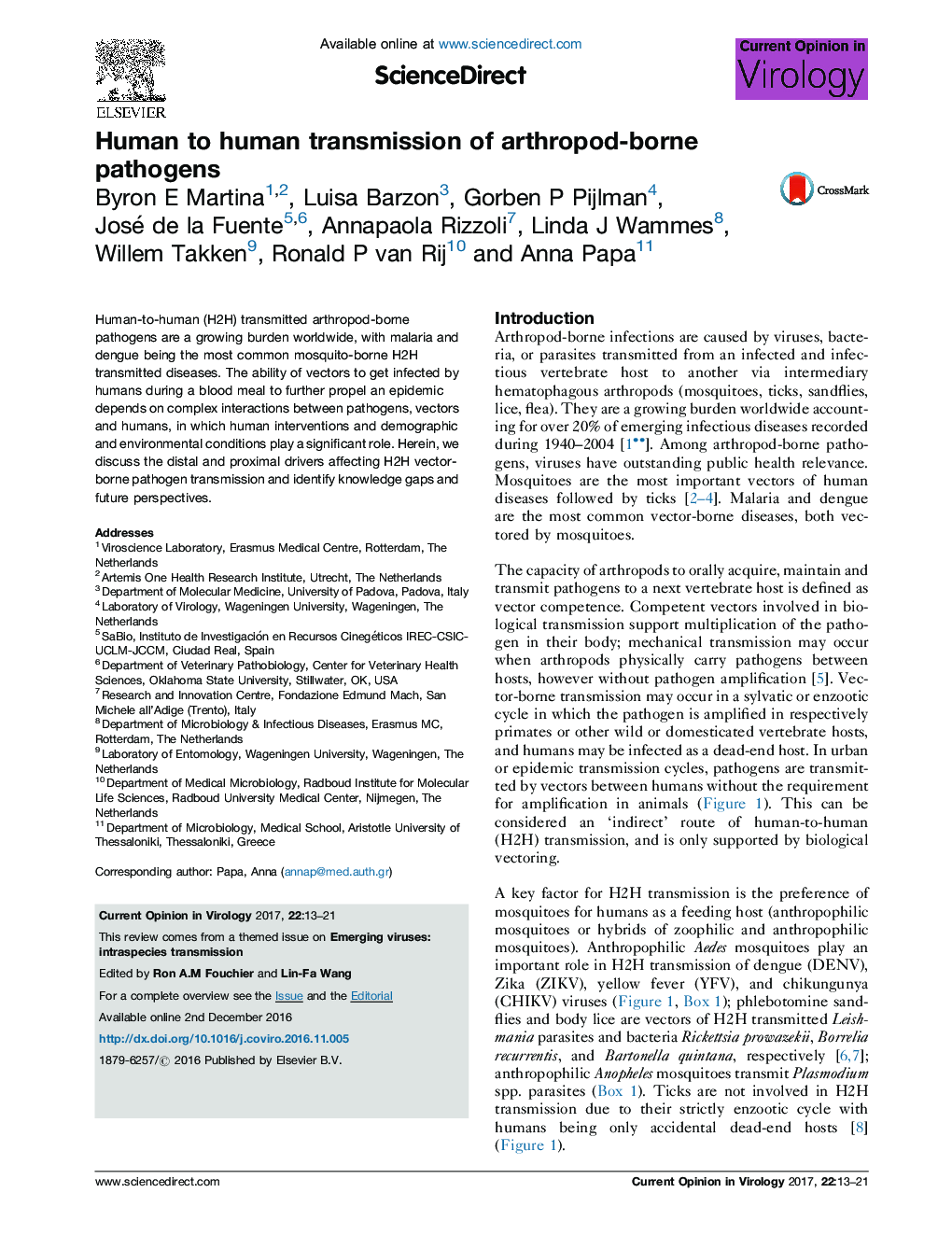| Article ID | Journal | Published Year | Pages | File Type |
|---|---|---|---|---|
| 5546234 | Current Opinion in Virology | 2017 | 9 Pages |
â¢H2H transmitted arthropod-borne pathogens are a growing burden on human societies.â¢This is due to environmental changes, urbanisation and growing trade and travel.â¢Proximal factors are host-pathogen-vector interactions driven by actors' biology.â¢Distal abiotic factors include temperature, relative humidity and air speed.â¢Research on pathogen-vector-host interactions and vector behavior is needed to predict transmission.
Human-to-human (H2H) transmitted arthropod-borne pathogens are a growing burden worldwide, with malaria and dengue being the most common mosquito-borne H2H transmitted diseases. The ability of vectors to get infected by humans during a blood meal to further propel an epidemic depends on complex interactions between pathogens, vectors and humans, in which human interventions and demographic and environmental conditions play a significant role. Herein, we discuss the distal and proximal drivers affecting H2H vector-borne pathogen transmission and identify knowledge gaps and future perspectives.
